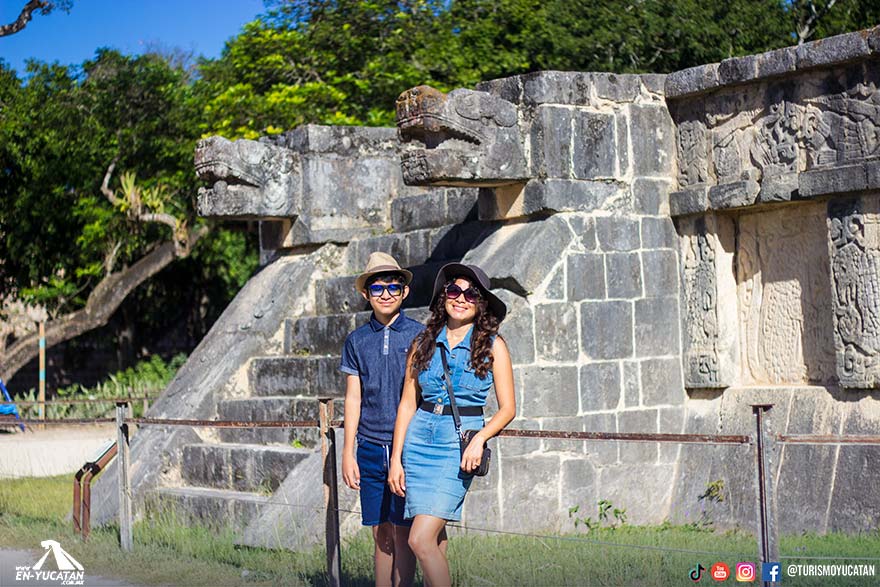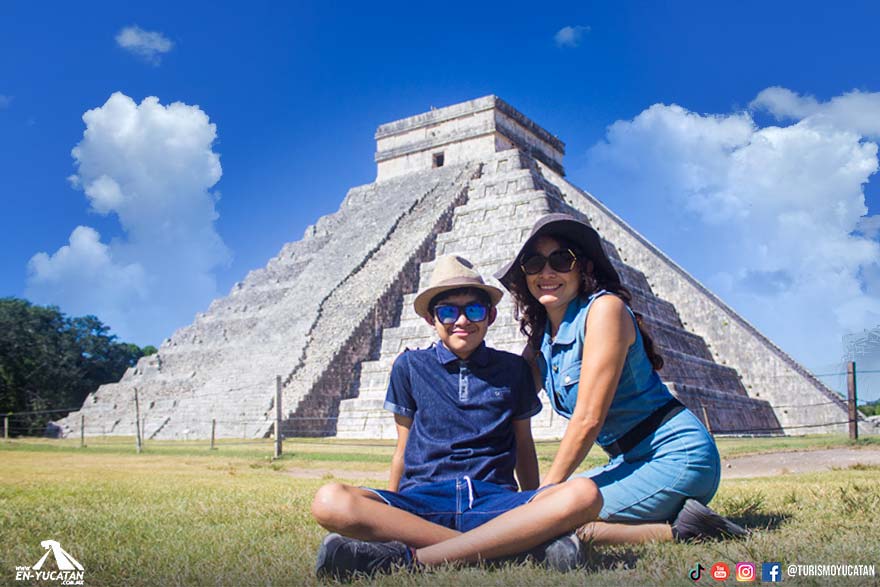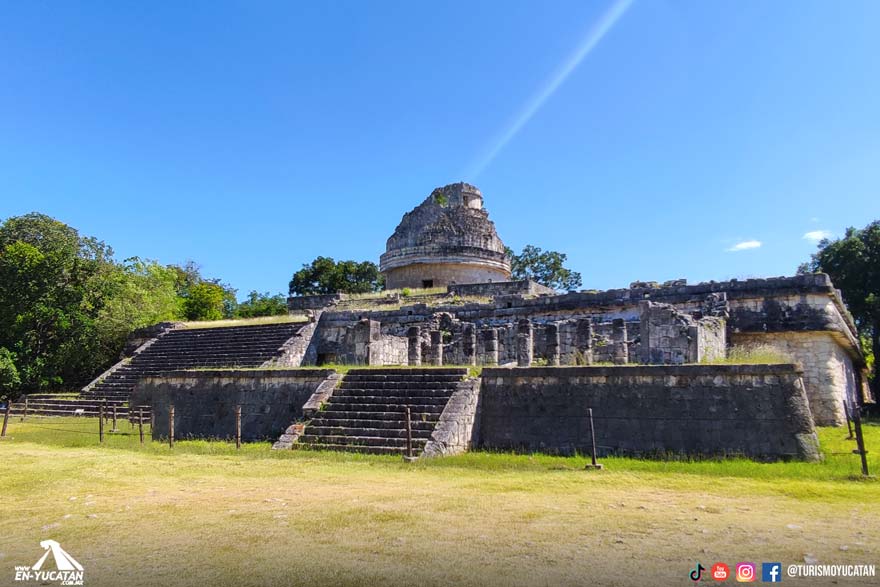Chichen Itza is located to the east of the state of Yucatan on the highway to Cancun, 120 km from the city of Mérida. Chichen Itza (Boca del Pozo de los Itzaes) is one of the most controversial places in the Mayan world, its history and chronology are the subject of debates; the origin of its inhabitants is still a puzzle, archaeologists modify their theories as the excavations advance.
The Itzaes settled in Chichen Itza in the 9th century AD. It is believed that they were Putun or Chontal Mayans. They forged a broad domain with a unified culture centered at Chichón Itza, however, around AD 1250. the city was abandoned for reasons not entirely determined.
So great was the power of this city that centuries after its decline it was still a site of pilgrimage and worship and even around 1540 AD. Francisco de Montejo, founder of Mérida, thought to build the capital there.
In its heyday, Chichen Itza covered 25 km2. The religious, cultural and administrative center covers about 6 km2; a short distance from it lived the elite, in palace-like buildings, carefully decorated and painted in bright colors. Around these in green fields, between 50 thousand and 100 thousand people lived in palapas with palm roofs.
The Castle of Kukulkan
The Castle of Kukulkan, with its 30 meters high, is the most imposing construction. Its antiquity is difficult to calculate, dates are estimated to range from 650 to 800 AD. The numbers of its measurements are related to the figures of the Mayan solar calendar, for example: 91 steps x 4 sides, 364, plus the platform: 365 days of the year. The five temple-side cana ornaments give 5 x 4:20 the days of the Mayan month.
It is in this building, where the accuracy of the deep knowledge of the Mayans is reflected, you can see the deity of Kukulkán, "The Feathered Serpent" descending punctually at each equinox, in a phenomenon of Light and shadow that attracts thousands of visitors from all over the world.
The ball court that had a cosmic meaning, with its war symbols and almost perfect acoustics, is one of the oldest constructions in the place with an inscribed date of 864 AD.
Visiting this majestic site is entering an indispensable chapter in the history of the Mayan people, no one can come to Yucatan without touring the Great Chichen Itza, and culminate this encounter with the Mayans enjoying their light and sound show offered every night of the year. .
North Group buildings:
- The Castle or temple of Kukulcan
- The Market
- The Steam Bath
- The Temple of the Warriors
- Platform of Venus
- The Sacred Cenote
- The Platform of Skulls
- Platform of Jaguars and Eagles
- The Ball Game
Central Group Buildings
- The Tuymba of the High Priest
- The Red House
- The Observatory
- The House of the Nuns
- The Church
- The Akab Dzib
- The Sculpted Boards
- The Cenote Xtoloc
Services in Chichen Itza
- Craft Market
- Restaurants
- Bathrooms
- Parking
- Library



